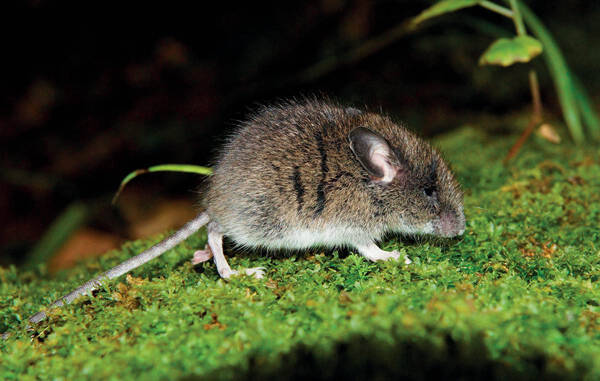Apodemus ilex
IUCN
LCBasic Information
Scientific classification
- name:Apodemus ilex
- Scientific Name:Apodemus ilex
- Outline:Rodents
- Family:Rodentia Muridae Apodemus
Vital signs
- length:
- Weight:
- lifetime:
Feature
Distribution and Habitat
It is distributed in the Three Parallel Rivers region in western China, including Gaoligong Mountain, Meili Snow Mountain, Baima Snow Mountain, and Gongbu area in southern Tibet. It is also distributed in Myanmar and northern India.
Appearance
The tooth morphology is similar to that of Apodemus draco, with three horns on the lingual side of the third upper molar. The hair is long, yellow-brown in color, with a distinct black area on the back. Some individuals have a black area in the center of the entire back; the tail is longer than the body length, about 110% of the body length. The ears are large, about 18mm, with black ear edges, or the entire front of the ear is black, and the hair is very short. The back of the ear is also black, with short hair. The forehead is usually gray-black. The boundary between the back and abdomen is obvious. The base of the hair on the abdomen is gray, and the tip of the hair is gray-white. The tail is two-colored above and below, gray-black on the back and gray-white on the abdomen. About 50% of individuals have a hair tuft at the end of the tail. The back of the front and back feet are pure white. The claws are milky white, and both the front and back feet have 5 fingers, and the claws are
Details
The Lancangjiang Apodemus belongs to the Murinae subfamily. The taxonomic status of this species is controversial. For a long time, it has been regarded as a subspecies of Apodemus draco, because it is very similar to Apodemus draco in morphology, with only a difference in the fur color on the back. It is indeed difficult to separate them from the appearance. In recent years, the Lancangjiang Apodemus was finally separated as an independent species through molecular systematic methods. Its distribution area does not overlap with that of Apodemus draco. There is no subspecies differentiation of the Lancangjiang Apodemus. It lives in forests, shrubs and shrubs near mountains. It likes humid areas and lives in caves. It feeds on a variety of plant seeds and fruits, and also eats green parts of plants and some insects. It is mainly active at night and dawn. The breeding period is from April to November. Each litter has at least 3 pups, up to 10 pups, and an average of 5-7 pups.










